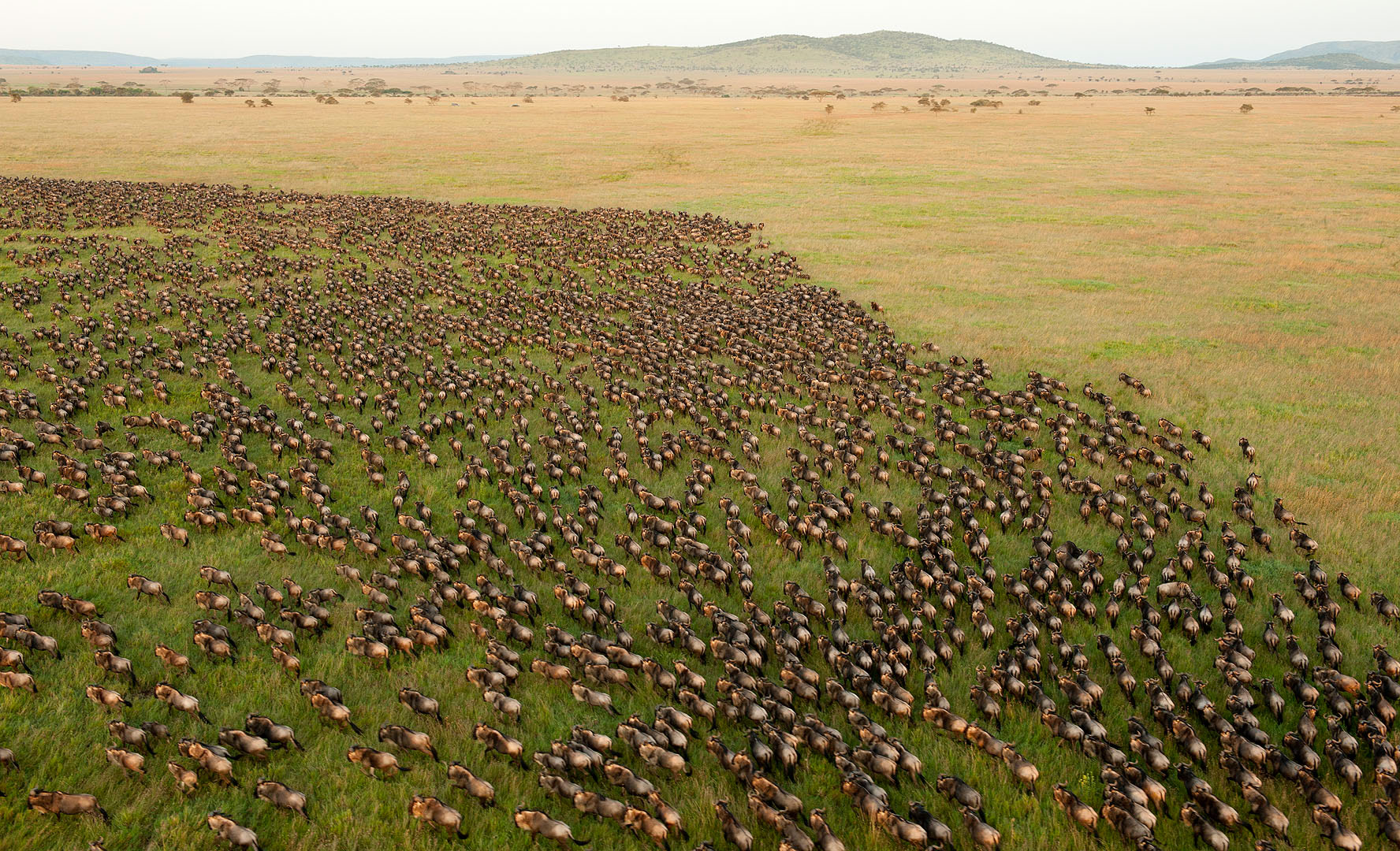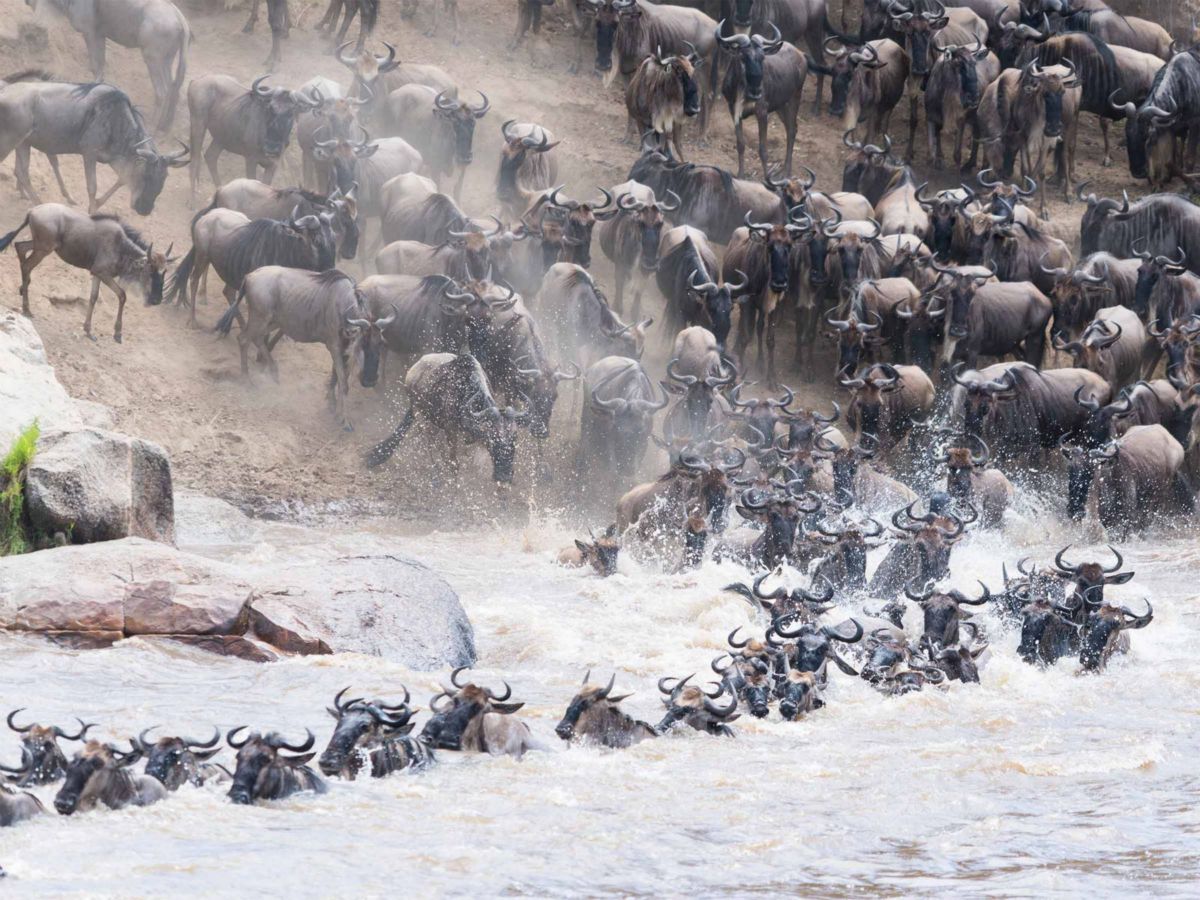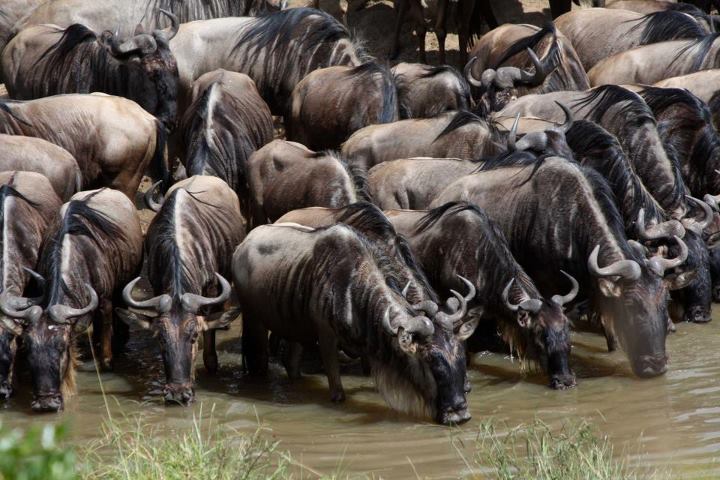
The Great Wildebeest Migration: A Month-by-Month Journey
January to March

During the early months of the year, the wildebeest herds gather on the southern Serengeti plains, where most calves are born around February in a synchronized birthing season. This abundance of newborns is a draw for predators, creating an intense wildlife spectacle. The herds gradually spread westward across these plains, and by April, they begin their epic migration northward.
April to June
By May, the Serengeti is alive with movement as the wildebeest push northward in search of fresh grazing lands and water. The area around the Moru Kopjes and west of Seronera becomes a flurry of activity, with columns of wildebeest often numbering in the hundreds of thousands, joined by zebra and gazelles. In June, the migration reaches the Grumeti River in the Western Corridor. Here, the herds often pause, forming high-density gatherings at the riverbanks, where they must navigate a patchwork of channels and pools. Though these crossings are perilous, they are less dramatic than the famous Mara River crossings but still present a formidable challenge due to the Grumeti’s large crocodile population.

July to August
The migration continues its northward trek, spreading out across a wide front, with some herds passing through the Grumeti Reserve and Ikorongo, while others journey north through the heart of Serengeti National Park. The movement is driven by the search for food, with the herds advancing steadily toward the Mara River.
September
In the northern Serengeti, the Mara River presents the most significant obstacle of the migration. The river’s powerful currents and resident crocodiles add a layer of danger to the crossings, often leading to scenes of chaos and panic as the herds surge through. Herds may cross northward one day, only to recross southward shortly after, resulting in intense and unforgettable viewing.

July to August
The migration continues its northward trek, spreading out across a wide front, with some herds passing through the Grumeti Reserve and Ikorongo, while others journey north through the heart of Serengeti National Park. The movement is driven by the search for food, with the herds advancing steadily toward the Mara River.
September
In the northern Serengeti, the Mara River presents the most significant obstacle of the migration. The river’s powerful currents and resident crocodiles add a layer of danger to the crossings, often leading to scenes of chaos and panic as the herds surge through. Herds may cross northward one day, only to recross southward shortly after, resulting in intense and unforgettable viewing.
October to November
By October, the herds begin a more unified movement southward through western Loliondo and the Serengeti’s Lobo area, following the seasonal rains that bring new green shoots to the southern plains. By November, the herds return to the short-grass plains of the southern Serengeti, where the cycle of the Great Migration begins anew.

